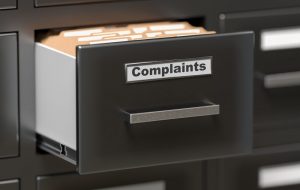If you’re just starting out in the rental business, make sure you have a well-written lease with clauses that foresee as many situations as possible to protect yourself and your valuable rental property. A real-estate lawyer can help you come up with a solid lease that protects your property, a lease that will help you evict a tenant more easily if they violate any of the terms or conditions of the lease.
If you want to write the lease on your own or can’t afford a lawyer, you can read this blog posting for tips on what to include in a good lease.
As we stated in an earlier posting (Lease vs. Rental Agreement: Which to Use? What is the difference?), lease agreements or contracts do not just protect landlords. They also protect tenants.
For example, a landlord may learn that he could lease his property to another party for more money. The law prevents the landlord from evicting tenants who live up to the terms of the contract. Under the law, as long as the tenant abides by the terms of the lease and pays his rent in full on time, he may not be evicted. If the lease is for 12 months, the landlord can require the tenant to vacate the property only on the last day of the 12-month period.
Include all tenants’ names on the lease
The first thing you should be aware of is to include the names of all adult tenants in the lease agreement. Have every adult tenant sign the lease agreement. Write the lease so each tenant is responsible for the full amount of the rent and for all of the other terms and conditions of the lease. This way, if one tenant refuses to pay, you can terminate the lease for all the tenants and get all of them evicted so you can find renters who will pay you the money they owe you on time, every month.
Another bonus is if just one tenant of, say, three violates other clauses of the lease agreements, you can evict all of them at one time. For example, your lease might say no dogs or pets, but one of the tenants later keeps a dog on your premises.

This can be grounds to evict all of the tenants if you find it necessary.
Limit the numbers of tenants or occupants
The lease needs to state clearly that the rental unit can be inhabited only by the adults named on the lease and their minor children. All of the adults need to sign the lease agreement, and they should be required to tell you how many children they will have living with them there. You should have thoroughly pre-screened all the adults who sign the lease.
If the names of all the adults who live in the unit are on the lease, it will prevent them from allowing a friend or relative to move into the rental unit without permission from you, the landlord. Limiting the number of tenants to just those who sign and their children also precludes tenants from subleasing the property to someone else. This way, people may rent your property only with your permission.
Fixed-term lease or month to month?
Be sure to specify in the language of the lease that it is a fixed-term lease. If it’s a month-to-month rental, then say that too.
Real estate law a lease spells out the conditions and terms of renting property, including the length of time, agreements on what the tenant is allowed to do with the property, including whether he can have pets or sublet the unit at some point. Leases are not necessarily just for living quarters such as apartments or homes. They can also control the terms and conditions for long-term rent of commercial buildings, warehouses, shops, offices or even land. In most cases, the (CAR) form, from the California Association of Realtors is usually a good and up to date lease.
A rental agreement usually runs month to month. Sometimes college students or professionals from out of town want a month-to-month agreement because they won’t be there for a full year or more.

These agreements are also signed and are terminated by either the tenant or the landlord in writing.
Clauses to include in a rental agreement are when the agreement begins, the number of days you require for notice of termination. Usually it’s 30 days unless the tenant has lived in the rental for more than a year, in which case it would usually be 60 days. You should also stipulate the number of days to notify a change in the agreement, again, usually 30 days if you are going to increase the amount of rent due, for example.
Use a fixed-term lease agreement for longer-term rentals. The typical length of a lease is one year, but it can go for two years or whatever term of tenancy you and the renter agree to. Your lease agreement should say the exact date tenancy begins and ends. It should also state clearly the length of the lease.
Specify the rent amount due and date!
Sometimes the most obvious things get left by the wayside. But be sure to remember to specify how much rent the tenant owes and on which day of the month he must pay it. Usually rents are due on the first of the month, but that is not an ironclad rule.
Specify whether there is a grace period for rent before the tenant is considered delinquent. Normally, the rent is due on the first of the month and delinquent on the second. You could give a Three to five days’ grace period or whatever period you want. But be sure the tenant understands, in writing in the lease, that you can initiate proceedings to have them removed if they are late, if they don’t pay either right when the rent is due of within the grace period. Some landlords will let it slide a time or two if someone is late, but under the law you can have tenants evicted if they are late with the rent.
Also include how you want the tenant to pay the rent, whether by cash, check or money order or automatic bank withdrawal. If it is by check, make sure to list on the lease an address to which the rent can be mailed. Also, lay out any late fees or fees for bounced checks.
You should also know ahead of time whether your rental property is in one of the cities that have rent-control ordinances.
Rent control could be coming to more California towns, but half of the states population already live under some kind of rent-control, including those in the cities of Los Angeles, Santa Monica, San Diego and San Francisco. In your lease agreement or rental agreement, you must follow the rent-control rules and regulations with respect to termination of the tenancy.
Security deposits: Avoid conflict
Security deposits are governed by Civil Code 1950.5 and can cause more legal troubles between tenants and landlords than any other reason. Save yourself time and trouble by really writing your security deposit clause in the lease agreement well. You and the tenant need to be crystal clear in the following areas:
- The exact amount of the security deposit the tenant will pay. Under California law, landlords can ask for two times the rent unless it is a furnished unit. If it’s a furnished rental unit, landlords may have a security deposit three times the rent. Also, landlords may charge an additional half of a month’s rent if the renter installs a water bed.
- You also need to specify how the security deposit would be used if necessary. Specify that you can keep all or part of the security deposit to repair any damage the tenant caused. Also, stipulate what the security deposit cannot be used for. This way you can say the deposit can’t be used as the last month’s rent.
- Specify how and when the security deposit or any remaining part of it may be returned. Under California law, landlords must provide receipts for any work done to the unit for damage that the tenant caused. If any part of the security is left over, the remainder must be returned to the tenant within three weeks of moving out.
No illegal activity allowed
Although this is substantially covered by California landlord tenant law, it’s always a good idea to include a lease clause that says the contract is terminated if you obtain evidence showing any illegal activity on the property. Many landlords have sought to end leases when they discover and get evidence of drug dealing on their property.

Also, in the lease prohibit disruptive behavior and require tenants to be respectful of other tenants. If they break any of these clauses, there are definite grounds for fast eviction.
Repairs and maintenance
Another area of conflict between landlords and tenants is repairs and maintenance. Protect yourself from legal fights by clearly delineating who is responsible for what in terms of repairs and maintenance.
Make sure that it is in the lease that the tenant must keep the property clean and sanitary and that the tenant will be responsible for damage that they cause through neglect or abuse.
List restrictions on what alterations the tenant may do to the property without your written permission. For example, you can require tenants to get permission to paint the walls of the unit or have a security system installed.
In the lease, give a procedure for reporting all repair claims and any dangerous living conditions, and detail how you, the landlord, will handle repair requests and complaint.
Entering the property
In the lease, state clearly that you may enter the property with proper notice. Landlords are required to give at least 24 hours’ notice before entering the rental unit unless it is an emergency. Most landlords will give written notice even to make repairs or respond to a tenant’s complaints.

Again, if there is an emergency, obviously the landlord or his workers can enter the property immediately without notice.
The pet clause
Be certain you state explicitly in the lease agreement what your policy on pets is. If you do not have a set policy, make sure it is clear. If you allow pets, make certain your lease agreement covers important areas such as additional security deposit, the size and number of pets and any additional responsibilities the tenant has with respect to pets.
Ask your tenant up front if they intend to have pets, especially dogs. Tell them, both verbally and in writing in the lease, that you will not tolerate dogs that bark excessively or create a nuisance to other tenants or neighbors.
Dogs that bark habitually disturb the peace of any rental property. If your tenant wants to have dogs, write your lease so it respects your other tenants’ right to a quiet environment. According to law, the tenants have a Right to Quiet Enjoyment that they pay for as part of their lease. Specify in the lease agreement that you will not allow excessive noise, including from barking dogs. Many municipalities have ordinances that prohibit allowing a dog to bark for more than 20 minutes when unattended. Barking for more than 20 minutes is a violation of most municipalities’ noise ordinances.
What to disclose when writing the lease agreement
Federal law requires landlords to let their tenants know certain things before the tenant moves in. The two most common clauses that need to be disclosed in the lease agreement are the presence of mold or lead-based paints, but other information also needs to be disclosed (see link). Also, California law requires landlords to give prospective tenants a list of any registered sex offenders near the rental units if tenants asks for it.
Make sure the lease conforms to the law
It is necessary for your lease agreement to conform to any state of California or local laws on safety and health codes, rules of occupancy and any anti-discrimination laws. There may also be restrictions on the type of business a tenant may do in his rental unit. There also may be local rules on parking and on the use of common areas on your property.
A well-written lease agreement, whether written by an attorney or by yourself, can help you avoid lawsuits that can cost a lot of time and money.
